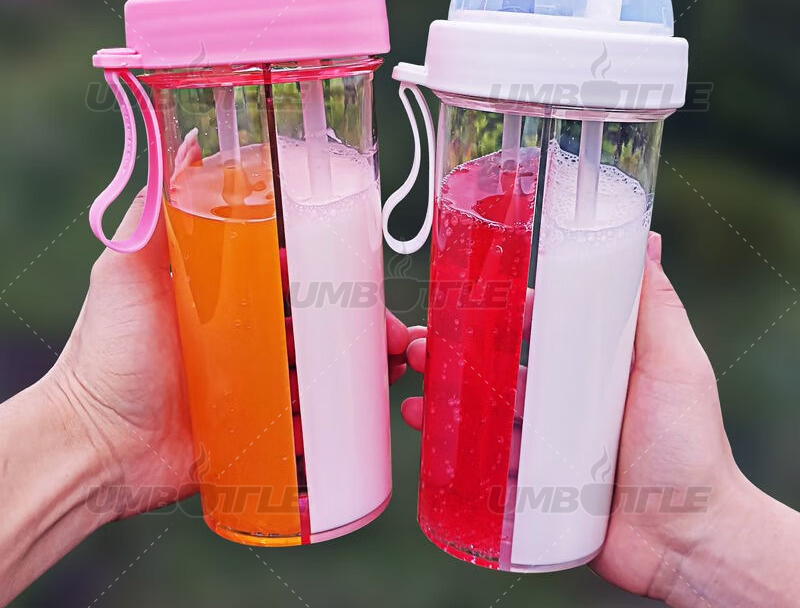Unveiling What Kind of Cup Can Achieve Both Plastic and Stainless Steel? Part Two
There’s a story in every cup, warmth in every life. Hello everyone, "Dong Dong's Cup Talk" is here. Over the years in this industry, I’ve had the opportunity to work on the design and development of more than 500 cups made from different materials, with different shapes and functions. Among these projects, it’s quite special when the same cup design needs to be realized in both plastic and stainless steel. https://www.umbottle.com/ProductsDetail-VB-10524.htmlThe reason it’s special is that it involves many considerations, including whether switching materials is feasible and whether it would lead to excessively high costs.
Today, I’ll use some case studies to analyze this. Although I’ve been in this industry for many years, my personal ability is limited. https://www.umbottle.com/ProductsDetail-VB-10524.htmlIf anything I share seems incorrect or mistaken, please point it out promptly. I hope my following insights can offer some help, especially to those who are new to the cup industry.
Below, I’ll focus on a "non-viable" case: the "Two-Half Split" Creative Cup.
This cup is very interesting, fully showcasing the moldability and creative freedom of plastic materials. https://www.umbottle.com/ProductsDetail-VB-10524.htmlHowever, these very highlights become insurmountable challenges for stainless steel craftsmanship.
1. Structural Challenges: From "Building Blocks" to "Welding Steel Plates"
Plastic Implementation (Ingenious):
The left and right halves are joined through grooves and protrusions (with silicone seals for waterproofing) and locked in place with bands at the mouth and base. This leverages the advantage of injection molding, which can precisely form complex snap structures in one go. https://www.umbottle.com/ProductsDetail-VB-10524.htmlThe silicone seal solves leakage issues, while the bands address expansion problems caused by thermal changes. When cleaning, the cup can be disassembled entirely, leaving no hard-to-reach spots.
Stainless Steel Nightmare (Difficult):
Welding Length and Deformation:
The stainless steel version also requires welding two halves of double-layered "shells" together. Imagine a long, irregular curved seam running along the cup’s body. https://www.umbottle.com/ProductsDetail-VB-10524.htmlWith such an extensive welding path, the intense heat generated during laser welding causes severe stress deformation. The cup could end up twisted like a "pretzel," making it extremely difficult to reshape.
Vacuum Sealing Disaster:
The core of a double-walled stainless steel cup is the vacuum layer between the walls. This design requires vacuum sealing for each half separately. Not to mention the minor dimensional errors after vacuum sealing that could prevent the halves from fitting together, simply reshaping and joining the two halves along that complex curved edge is nearly impossible to achieve with 100% tightness. https://www.umbottle.com/ProductsDetail-VB-10524.htmlIn this structure, defective products due to "vacuum loss" aren’t just "common"—they’re "almost universal." The yield rate might be less than 5%, meaning 95 out of 100 cups would be scrapped, resulting in astronomical costs.
2. The "Bottomless Pit" of Equipment and Costs
To produce this cup, we would need to customize welding machines and vacuum furnaces capable of handling such special-shaped, long-path welding. This investment could amount to millions or even tens of millions. https://www.umbottle.com/ProductsDetail-VB-10524.htmlNo rational business owner would take such a risk for a creative product with uncertain market prospects. This isn’t just about high production costs—it’s about "production feasibility."
3. The Practicality Paradox: Creativity Becomes a Burden
Weight and Portability:
Splitting a plastic cup into two halves makes it easy to disassemble and clean, and the cup itself remains lightweight. However, stainless steel must maintain a certain thickness for strength and vacuum insulation, https://www.umbottle.com/ProductsDetail-VB-10524.htmlmaking the cup inherently heavy. Splitting it into two halves and adding extra connecting structures completely defeats the original purpose of portability.
Structural Strength:
Plastic has some flexibility, so minor bumps aren’t a big issue. But with a two-half stainless steel structure, if it’s dropped, it’s prone to deformation, https://www.umbottle.com/ProductsDetail-VB-10524.htmlmaking it impossible to reassemble or causing leaks. The "creative band" could also fail upon impact.

There are stories in the cup, and life has warmth. Choose a good factory to sell good water cups. We provide global OEM services for patented products and provide global OEM services with professional teams and high quality standards. Dongguan Zhan Yi Commodity Technology Co.,Ltd. specializes in high-quality cup and kettle products. We are willing to serve you wholeheartedly.